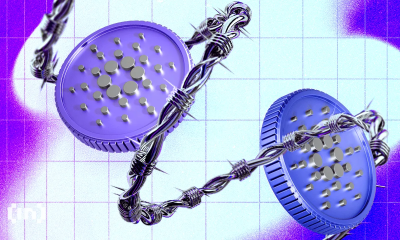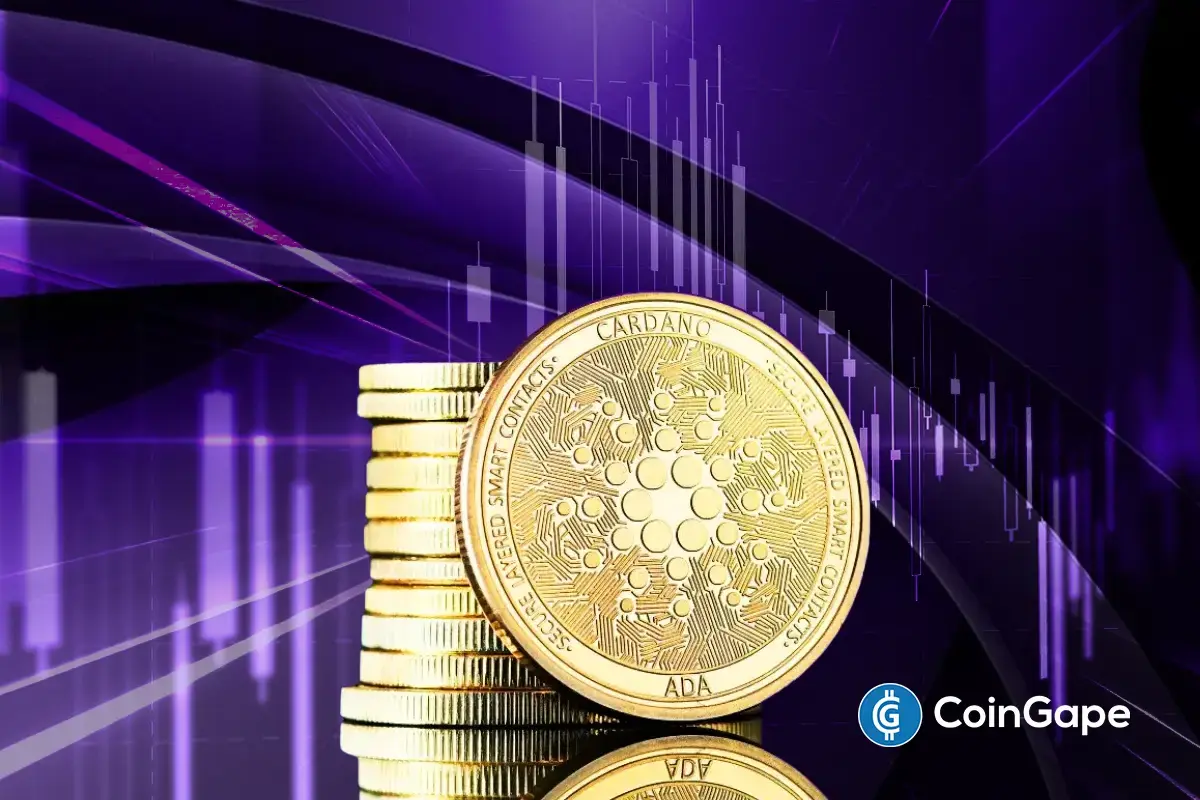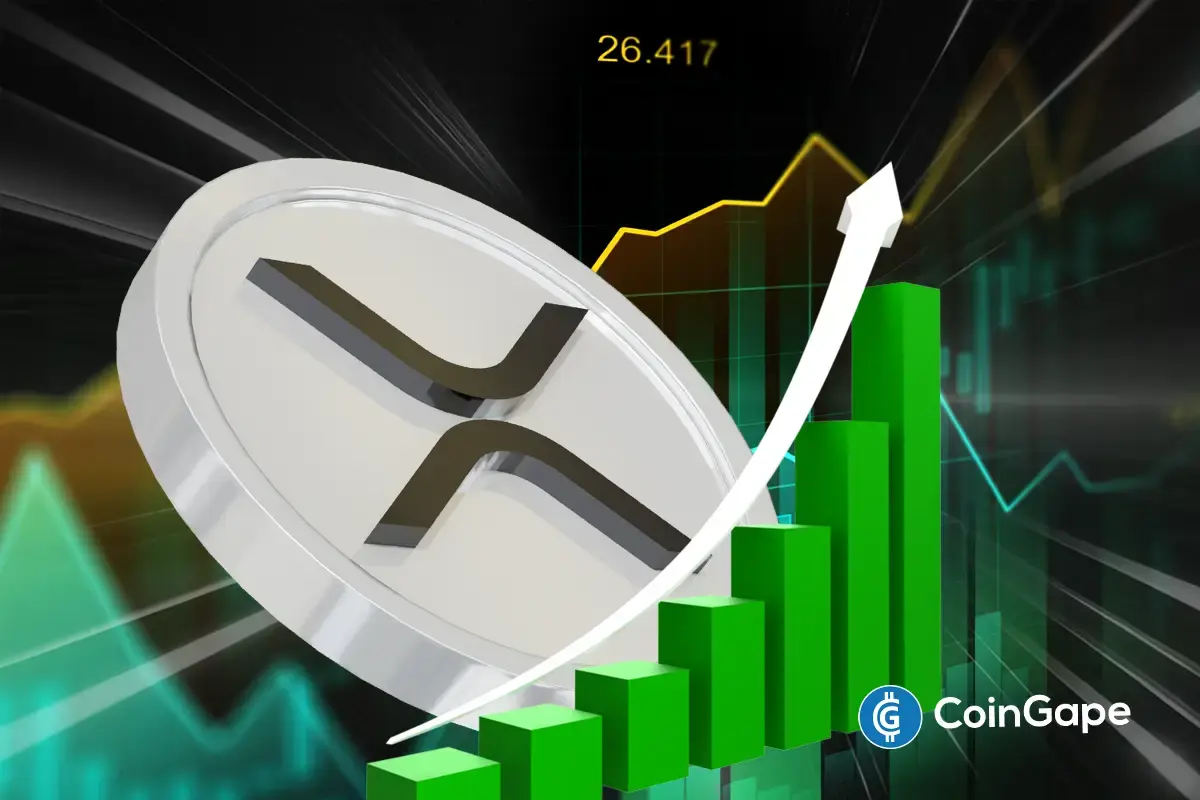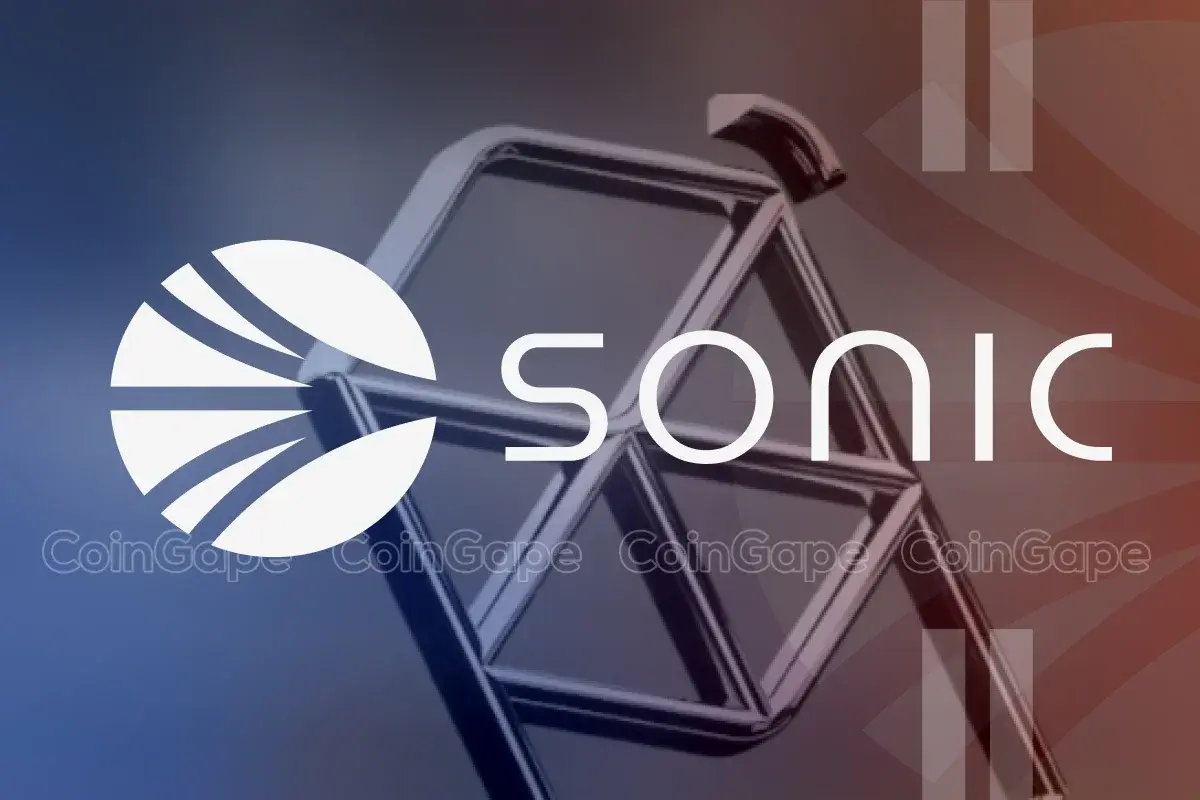Market
Charles Hoskinson Reveals Future Plans After Cardano Hard Fork

Cardano (ADA), the layer-1 blockchain, has officially launched its Chang hard fork. This milestone marks a remarkable shift toward decentralized governance.
Late Sunday, the governance of the $13 billion blockchain began transitioning to its ADA token holders. The Cardano community had long anticipated this change.
First Phase of Cardano Chang Hard Fork
With the Chang upgrade now active, ADA holders gain the ability to elect governance representatives and vote on crucial development proposals.
“Today’s Chang hard fork marks a major milestone for the Cardano blockchain, ecosystem, and community—fulfilling the promise of a truly self-governing, decentralized network,” the Cardano Foundation announced.
Read more: Who Is Charles Hoskinson, the Founder of Cardano?
Outlined in Cardano Improvement Proposal CIP-1694, the Chang hard fork introduces a new governance structure featuring three user-led bodies:
- The Constitutional Committee,
- Delegate Representatives (dReps), and
- Stake Pool Operators (SPOs).
Previously, the power to initiate upgrades or hard forks resided with Cardano’s three founding entities—the Cardano Foundation, Input Output Global (IOHK), and Emurgo. Now, this responsibility shifts to the newly established governance groups. On August 30, Charles Hoskinson, the co-founder of Cardano, emphasized the finality of this shift, declaring the “Genesis keys are dead.”
Cardano’s Chang hard fork will have a two-phase implementation. The first, which is already live, features an Interim Constitutional Committee.
This committee will temporarily oversee governance, ensuring a smooth transition as the rest of the governance model is implemented. Consequently, the new governance bodies will be fully empowered in 90 days.
This initiative marks Cardano as one of the first major blockchains to implement a token-based governance system, heralding what is known as the era of Voltaire. This name references the French Enlightenment writer who was a staunch free-speech advocate.
Furthermore, in an interview with BeInCrypto, Hoskinson stated that he plans to introduce a vision for “Cardano 2” in October. He will outline the potential improvements and directions for the Cardano ecosystem.
Challenges With the Decentralized Governance Model
However, while many Cardano fans celebrate this move, decentralization presents challenges. Governance bodies such as the decentralized autonomous organizations (DAOs) have faced criticism for issues such as bloated budgets and lack of adequate checks and balances. Critics also point out that power often ends up concentrated in the hands of a few.
On the other hand, the new governance model might make it challenging for regulatory bodies such as the US Securities and Exchange Commission (SEC) to label Cardano a security.
“If the SEC wants to send a subpoena to someone from Cardano, they will have to address it to all ADA holders around the world. The 3 founding entities technically no longer have any converol over Cardano,” a community account, Cardanians, noted.
Despite the hard fork, ADA’s market response was underwhelming, with a decrease of 3.72%. As of writing, ADA is changing hands at $0.331192.
Read more: Cardano (ADA) Price Prediction 2024/2025/2030

Once ranked among the top three cryptocurrencies (excluding stablecoins), ADA has slipped from the top ten by market capitalization. Other blockchains like Tron and Toncoin have flipped Cardano’s market capitalization.
Moreover, ADA remains down 89% from its all-time high of $3.09, recorded three years ago on this date. However, Hoskinson plans to focus on narratives such as decentralized social networks and artificial intelligence (AI) integrations to support Cardano regain its strong position.
“We’ve now gotten the protocol to a point where I have the ability to build protocols and applications that can change people’s lives. I’m a huge advocate of free speech, [hence] I’d love to build a decentralized social network. Also, I just recently spoke at the largest AI conference in the United States, where I talked about the challenges of merging AI and blockchain. I’d like to see a decentralized AI aligned in much the same way that we align a cryptocurrency as demonstrated by what we’ve done here with Cardano,” Hoskinson said.
Disclaimer
In adherence to the Trust Project guidelines, BeInCrypto is committed to unbiased, transparent reporting. This news article aims to provide accurate, timely information. However, readers are advised to verify facts independently and consult with a professional before making any decisions based on this content. Please note that our Terms and Conditions, Privacy Policy, and Disclaimers have been updated.
Market
Top 3 Made in USA Coins to Watch In April

Made in USA coins continue to try a rebound, with Solana (SOL), RENDER, and Jupiter (JUP) standing out as key names to watch in April. Despite recent price corrections, each of these tokens plays a major role in high-growth areas like DeFi, AI, and blockchain infrastructure.
Solana has seen its price dip, but ecosystem activity remains strong; RENDER is riding the wave of AI demand despite market turbulence; and Jupiter is showing solid usage metrics even as its token struggles. Here’s a closer look at the technical and fundamental setups for each of these standout U.S.-based projects.
Solana (SOL)
Solana has faced a notable price correction over the past week, with its value dropping nearly 13%. If this bearish momentum continues, the token could be on track to retest the critical support level at $120.
A breakdown below that could see SOL sliding further toward the $112 mark.
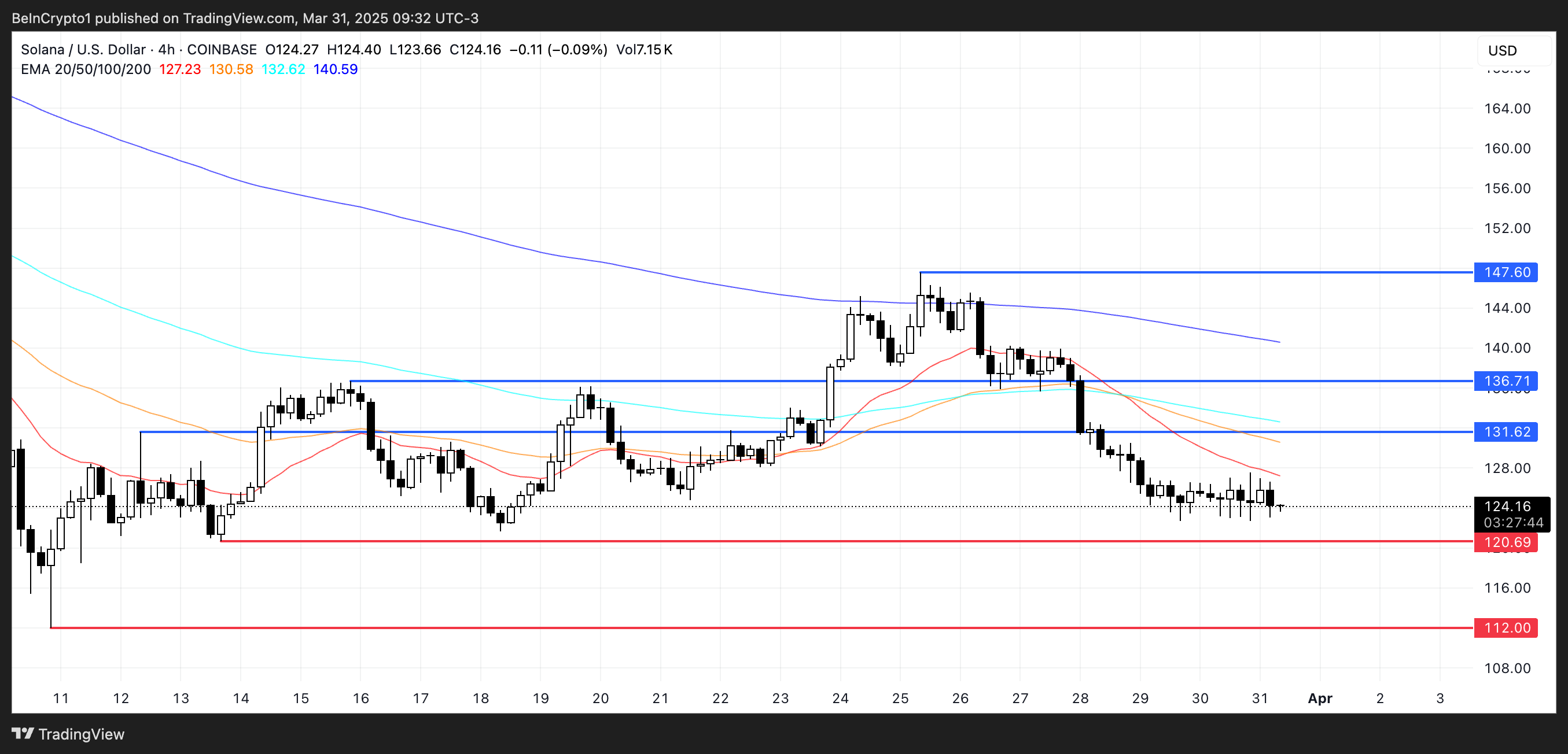
Despite the recent downturn, Solana remains one of the most relevant Made in USA coins and continues to show impressive usage metrics. PumpFun, for example, generated nearly $9 million in revenue over the past 24 hours, second only to Tether.
After a short period when BNB led the DEX volume race, Solana seems to be regaining traction—its decentralized exchange volume has surged by 128% in just seven days, reaching $18 billion and surpassing both Ethereum and BNB.
If this recovery in momentum persists, SOL could target a move toward the $131 resistance level. A successful breakout there could open the door to further gains toward $136 and potentially $147.
RENDER
RENDER, one of the most prominent U.S.-based cryptocurrencies with a focus on artificial intelligence, has seen its price decline nearly 11% over the past seven days.
This drop reflects the broader correction that has impacted many AI-related tokens in recent months.
However, new developments in the AI infrastructure space may provide a catalyst for a potential rebound, especially as the limitations of centralized systems become clear.
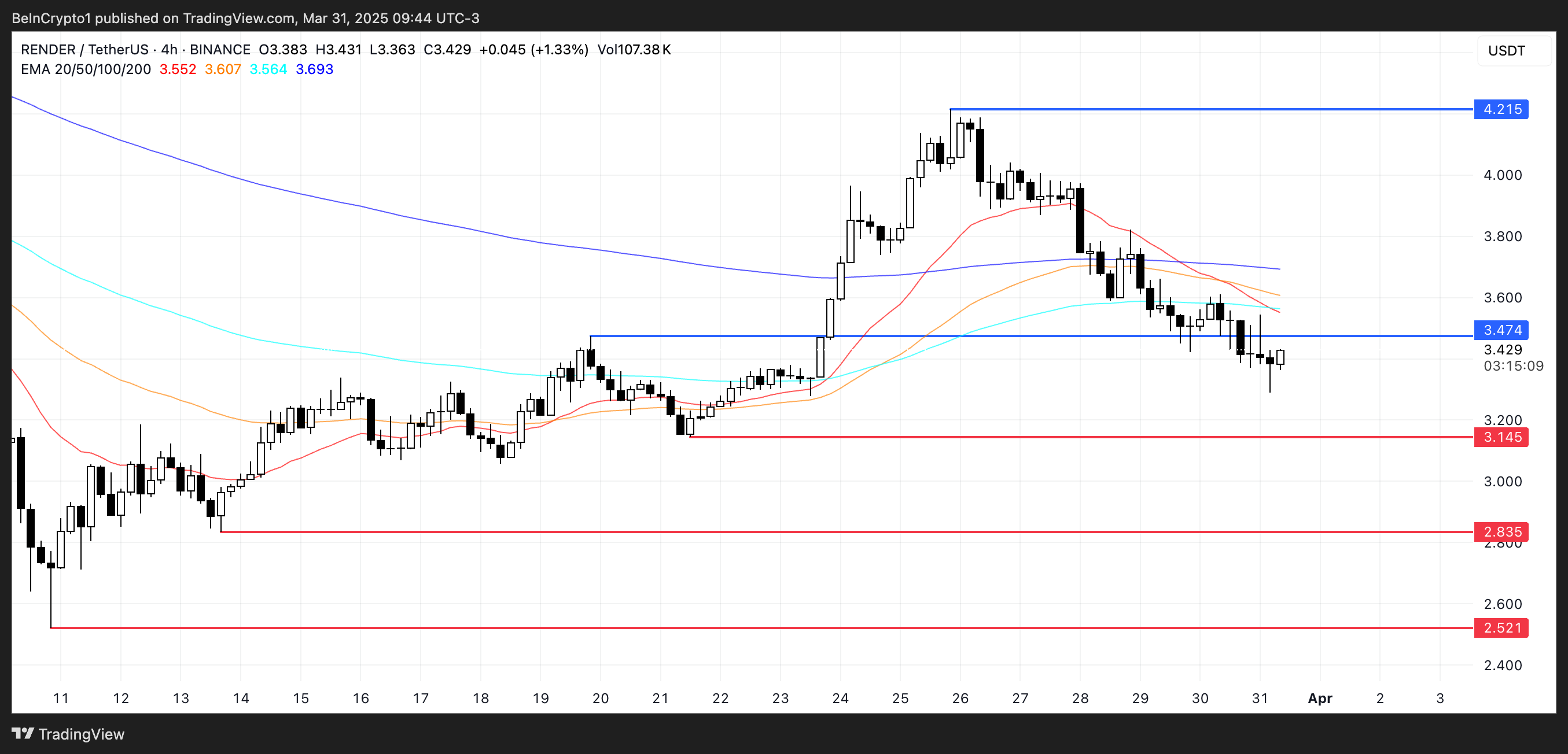
If bullish momentum returns to the AI sector, RENDER could look to challenge the resistance at $3.47, and a successful breakout might open the door for a rally toward $4.21.
However, if the current correction deepens, the token could fall to test the $3.14 support level. A breakdown there may trigger further losses, potentially dragging RENDER down to $2.83 or even $2.52—its lowest level in recent weeks.
Jupiter (JUP)
Despite Solana’s recent struggles, Jupiter—its leading DEX aggregator—is demonstrating impressive strength in terms of activity.
In the last 24 hours, Jupiter ranked as the fourth-highest protocol in crypto by fee generation, collecting nearly $2.5 million.
Only Tether, PumpFun, and Circle managed to outperform it, highlighting the platform’s growing relevance within the Solana ecosystem even during periods of broader market weakness.
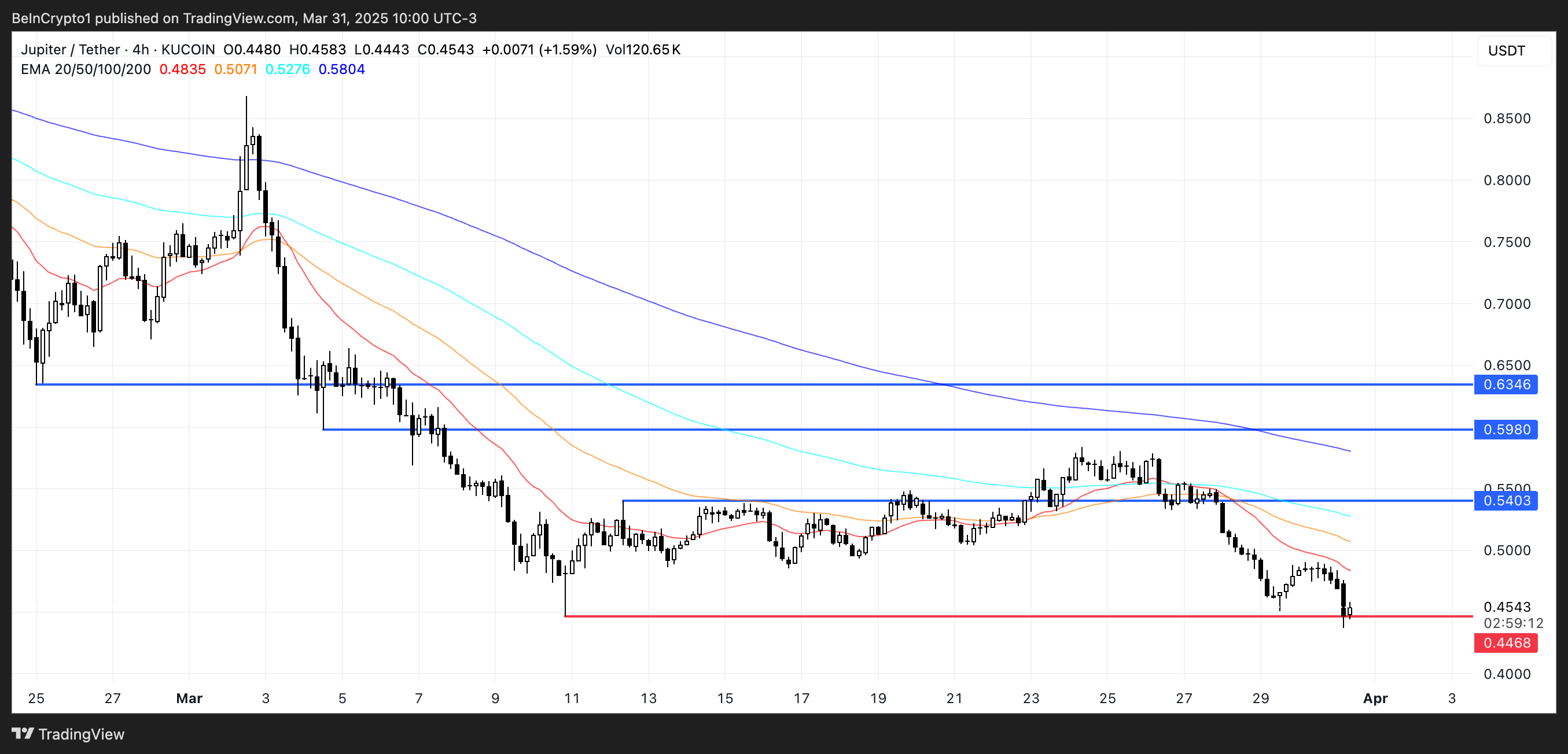
However, JUP, Jupiter’s native token, hasn’t mirrored this positive momentum. Its price has dropped over 21% in the past week, being one of the worst performers among the biggest Made in USA coins. It has remained below the $0.65 mark for three consecutive weeks.
With JUP now hovering dangerously close to a key support at $0.44, a breakdown could see the token dip below $0.40 for the first time ever.
Still, if market sentiment shifts and momentum returns, JUP could begin climbing again—first testing resistance at $0.54, then potentially moving toward $0.598 and even $0.63 if bullish pressure intensifies.
Disclaimer
In line with the Trust Project guidelines, this price analysis article is for informational purposes only and should not be considered financial or investment advice. BeInCrypto is committed to accurate, unbiased reporting, but market conditions are subject to change without notice. Always conduct your own research and consult with a professional before making any financial decisions. Please note that our Terms and Conditions, Privacy Policy, and Disclaimers have been updated.
Market
Cardano (ADA) Whales Hit 2-Year Low as Key Support Retested
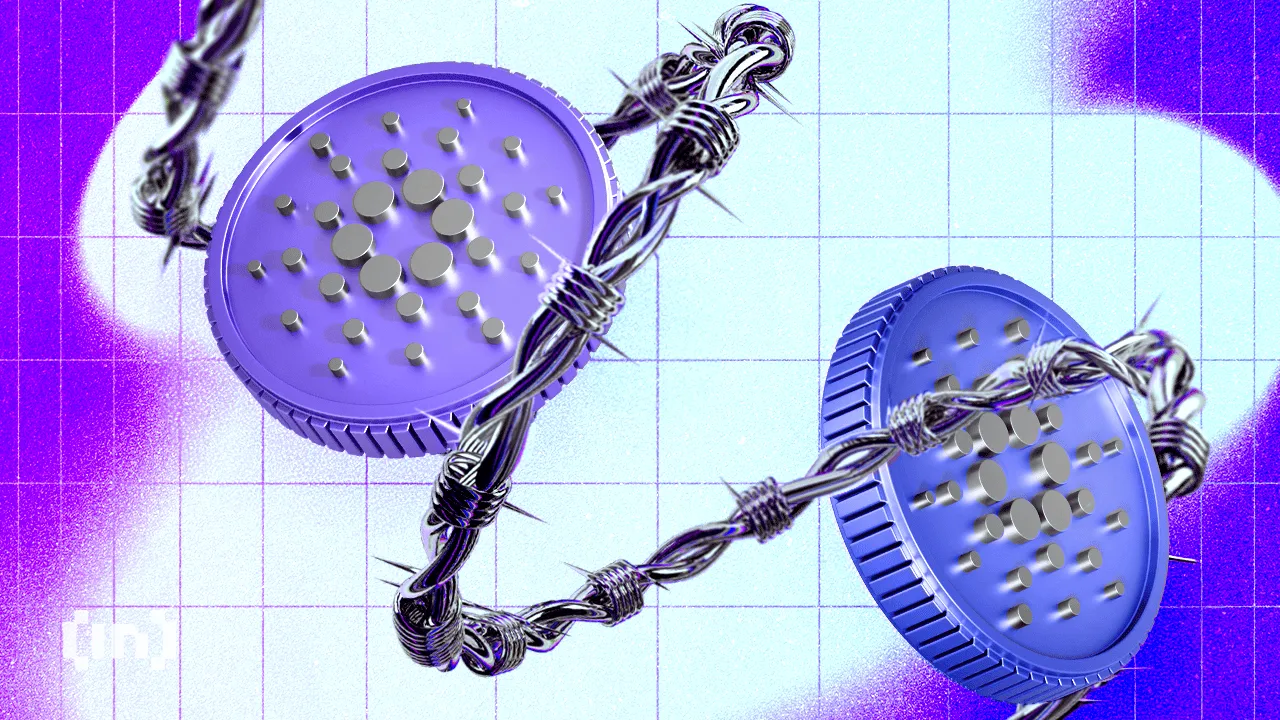
Cardano (ADA) is facing mounting pressure as its price corrects by 10% over the past seven days, continuing a broader downtrend that has kept it trading below the $1 mark for nearly a month. With technical indicators flashing warning signs and large holders exiting their positions, concerns around ADA’s short-term stability are growing.
The recent rejection at higher resistance levels and a strong directional trend signal suggest that bearish momentum is far from over. As the $0.64 support level is tested once again, ADA’s next move could determine whether a rebound is possible—or if further downside is ahead.
Cardano ADX Shows The Downtrend Is Very Strong
Cardano’s Average Directional Index (ADX) is currently at 40.19, rising sharply from 15.83 just four days ago. This steep increase suggests a rapid strengthening in the trend’s momentum.
Given that ADA is currently in a downtrend, the rising ADX indicates that bearish momentum is intensifying and the current downward move is gaining traction.

The ADX is a trend strength indicator that measures how strong a trend is, regardless of its direction. It ranges from 0 to 100, with readings below 20 typically indicating a weak or non-existent trend, while values above 25 suggest a strong trend is in place.
Cardano’s ADX climbing above 40 confirms that the current downtrend is active and becoming stronger. If this trend continues, it may point to further downside pressure unless a shift in momentum begins to build from the bulls.
ADA Whales Dropped To Their Lowest Level Since February 2023
The number of Cardano whales—wallets holding between 1 million and 10 million ADA—has dropped to 2,406, down from 2,421 just four days ago.
This decline brings the whale count to its lowest level since February 2023, marking a potentially meaningful shift in large-holder behavior. These movements are worth paying attention to, as changes in whale holdings often precede broader market trends.
Tracking whales is important because these large holders can significantly influence price action through their buying or selling decisions. A decline in whale numbers can signal reduced confidence or capital rotation into other assets.
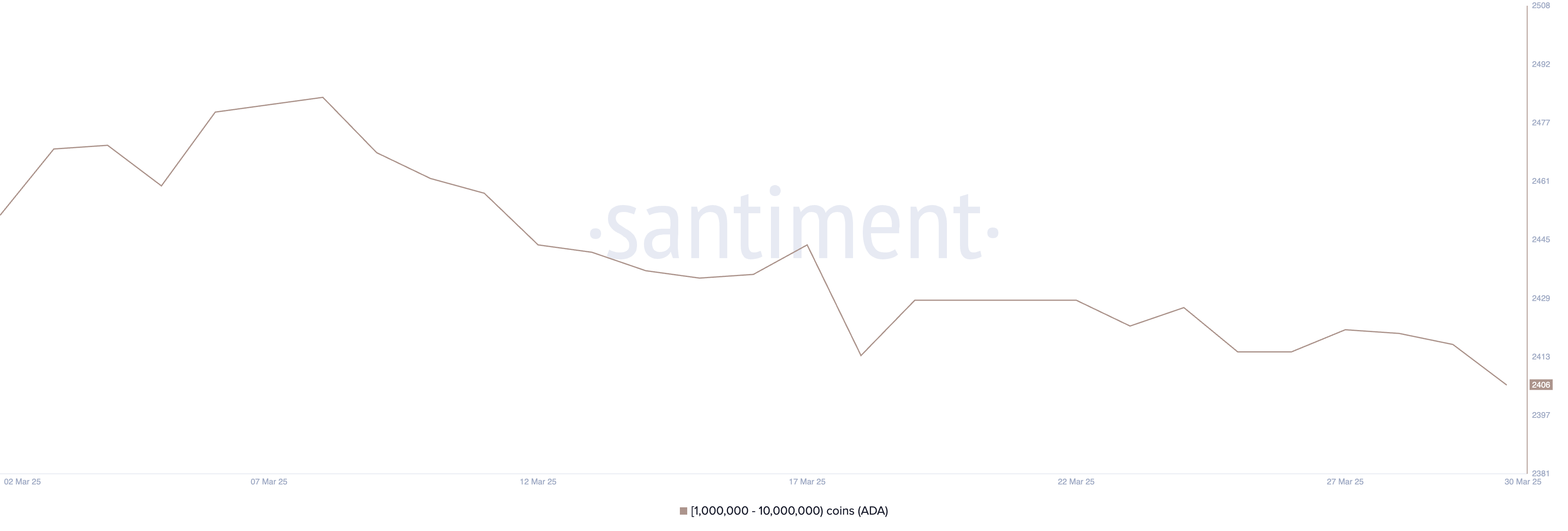
In Cardano’s case, the drop suggests that some major players may be exiting or reducing exposure, which could add downward pressure to ADA’s price.
If this trend continues, it could weaken investor sentiment and make it harder for ADA to recover in the short term.
Can Cardano Sustain The $0.64 Support Again?
Cardano price recently tested the support level at $0.64 and managed to hold, showing that buyers are still defending that zone. This support has become a key line in the sand for ADA’s short-term outlook.
If the current downtrend is reversed and bullish momentum picks up, the next upside target would be the resistance at $0.69. A breakout above that level could open the door for a push toward $0.77.
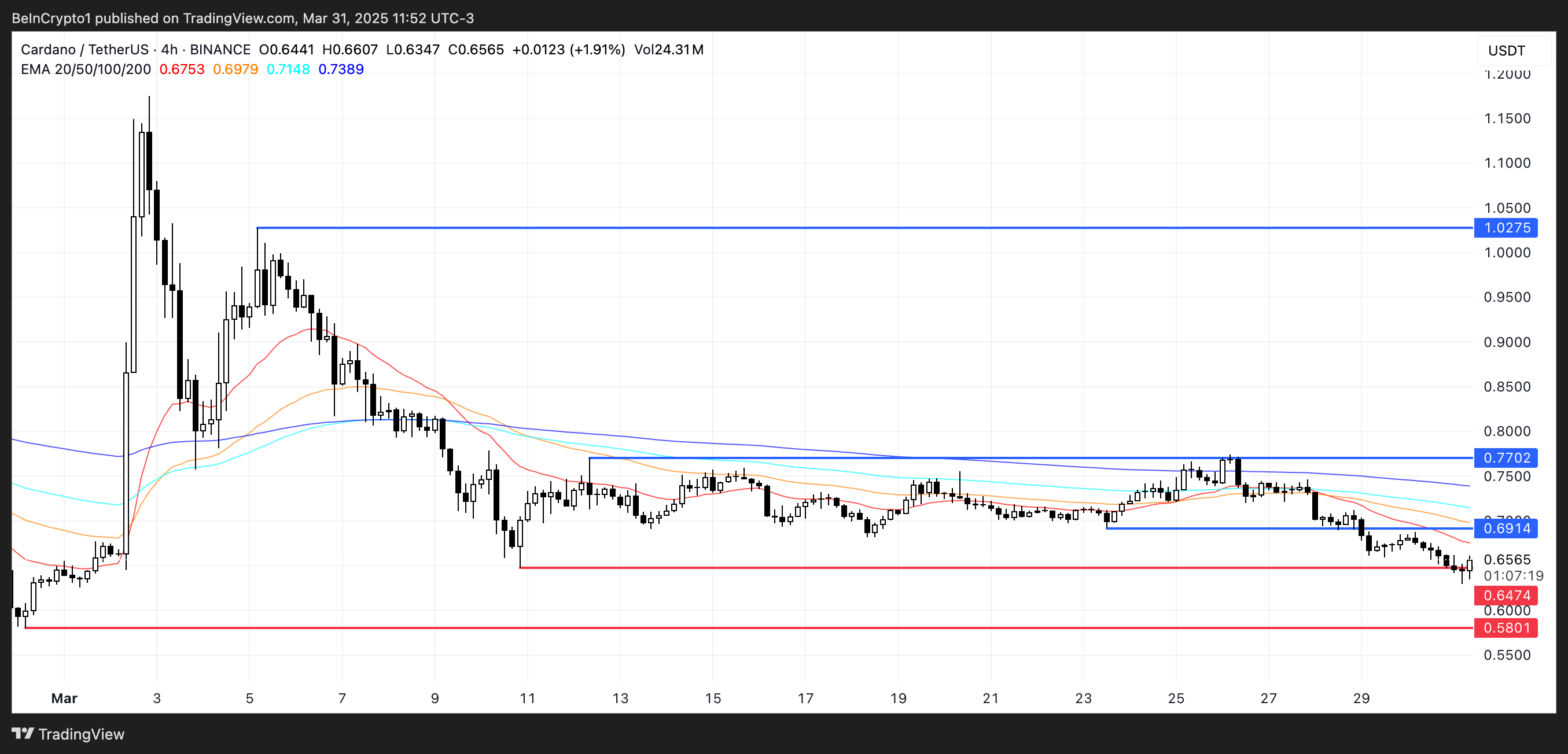
Should the rally continue with strength, ADA could aim for $1.02—marking a return above the $1 level for the first time since early March.
However, the $0.64 support remains a critical level to watch. If Cardano tests it again and fails to hold, it could indicate weakening buyer conviction.
A breakdown below $0.64 would likely send ADA toward the next support at $0.58. This would confirm a continuation of the downtrend and possibly trigger further selling pressure.
Disclaimer
In line with the Trust Project guidelines, this price analysis article is for informational purposes only and should not be considered financial or investment advice. BeInCrypto is committed to accurate, unbiased reporting, but market conditions are subject to change without notice. Always conduct your own research and consult with a professional before making any financial decisions. Please note that our Terms and Conditions, Privacy Policy, and Disclaimers have been updated.
Market
This is Why PumpSwap Brings Pump.fun To the Next Level

Since launching PumpSwap, token launchpad Pump.fun has resumed its position as a top-level protocol by fees and revenue. It saw over $2.62 billion in volume in less than two weeks, signifying high market interest.
Nonetheless, the meme coin sector as a whole has been more volatile than usual lately. PumpSwap is an attractive new option, but it still needs to stand the test of time.
Pump.fun Surges with PumpSwap
Pump.fun, a prominent meme coin creation platform, recently suffered some difficulties in the market. Facing lawsuits and criticism from the industry, the platform’s revenue had been declining in 2025. However, since launching PumpSwap, Pump.fun’s income has rebounded, making it one of the largest protocols by fees and revenue.

PumpSwap is a decentralized exchange on Solana’s blockchain, and it has grown very quickly since its launch less than two weeks ago. It has already managed over $2.62 billion in trade volume, although its daily volume fell over the weekend. Pump.fun’s cofounder spoke highly about PumpSwap, calling it a “crucial step that will help grow the ecosystem.”
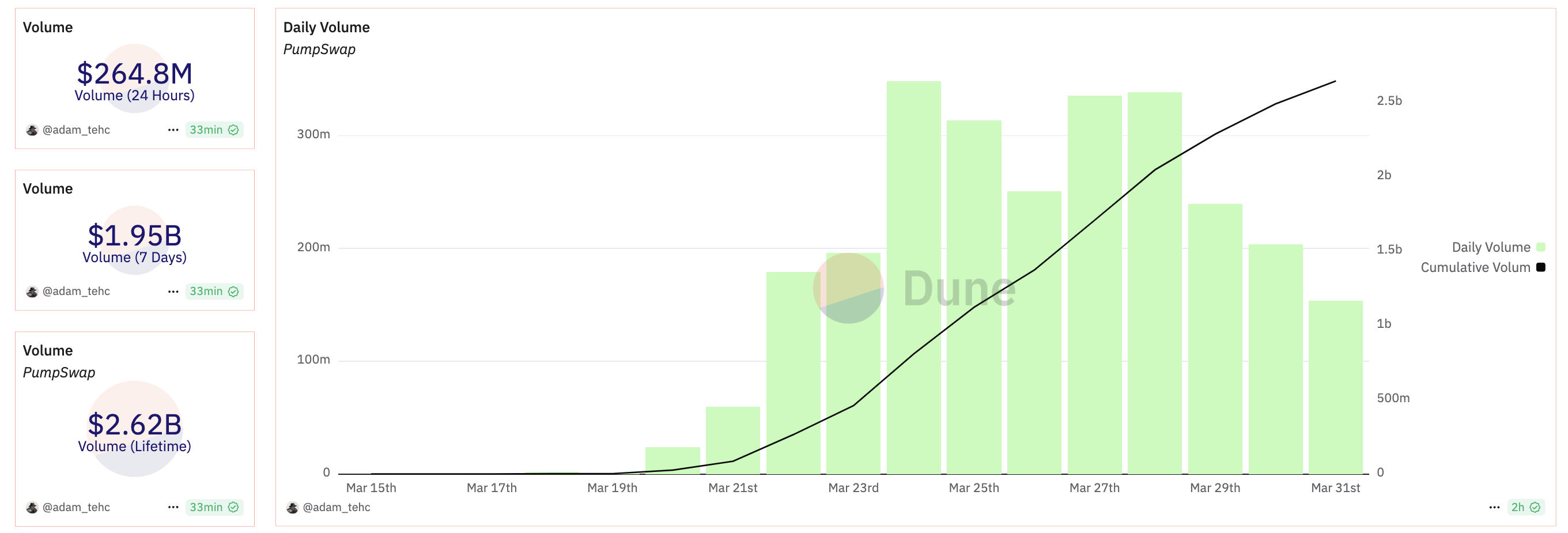
Pump.fun’s overall revenues were declining before it launched PumpSwap, and they have since jumped back up. However, it’s important to not overstate the new exchange’s success. The exchange’s total fees collected have skyrocketed compared to Pump.fun, but the actual revenue growth has been comparatively small.
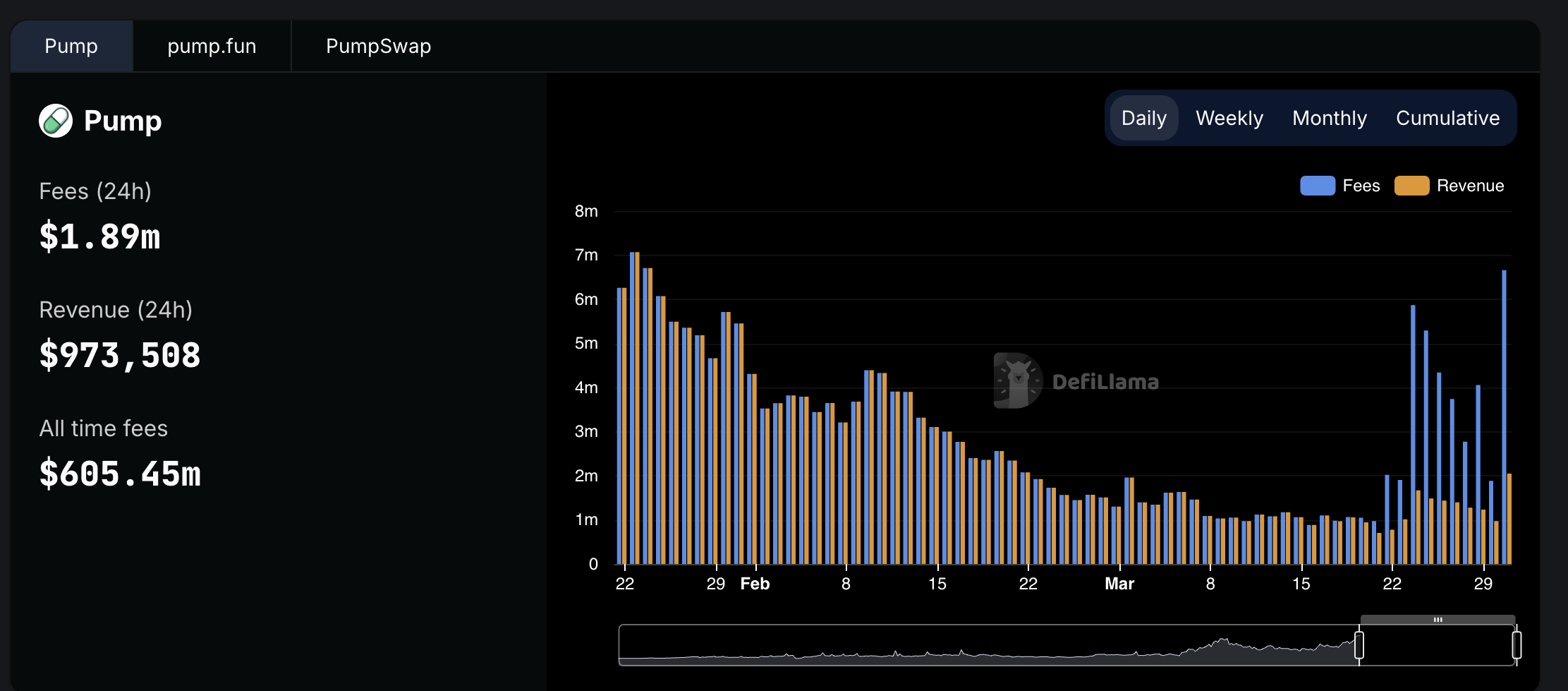
Still, these low fees also have significant advantages. Demand seems to be drying up in the meme coin sector, but Pump.fun faces stiff competition in the form of firms like Raydium, using low fees as a competitive edge. It has also promised things like revenue sharing with token creators to promote ecosystem growth.
Ultimately, the meme coin market as a whole is full of uncertainty. PumpSwap has been able to keep Pump.fun competitive as a top-level platform in this space, giving it a welcome reprieve. The real challenge will come in determining long-term viability.
Disclaimer
In adherence to the Trust Project guidelines, BeInCrypto is committed to unbiased, transparent reporting. This news article aims to provide accurate, timely information. However, readers are advised to verify facts independently and consult with a professional before making any decisions based on this content. Please note that our Terms and Conditions, Privacy Policy, and Disclaimers have been updated.
-

 Market24 hours ago
Market24 hours agoBitcoin Bears Tighten Grip—Where’s the Next Support?
-
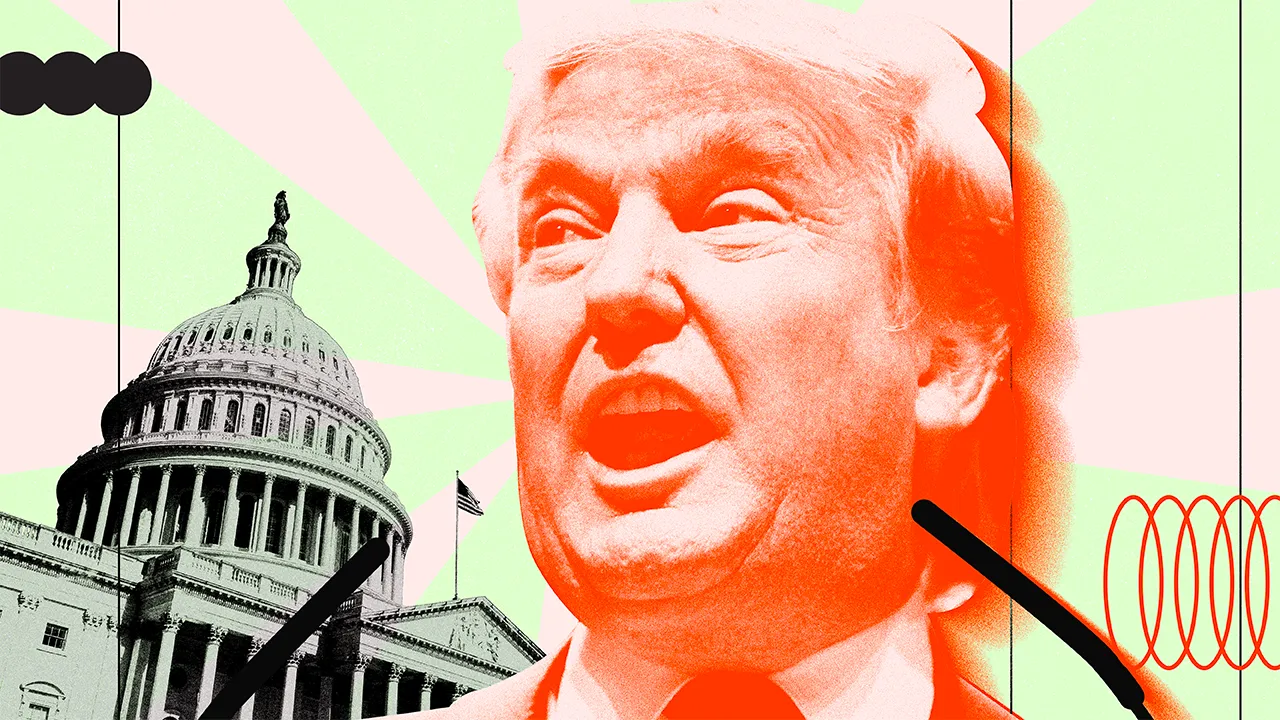
 Market9 hours ago
Market9 hours agoTrump Family Gets Most WLFI Revenue, Causing Corruption Fears
-

 Market23 hours ago
Market23 hours agoEthereum Price Weakens—Can Bulls Prevent a Major Breakdown?
-

 Market20 hours ago
Market20 hours agoBitcoin Price Nears $80,000; Fuels Death Cross Potential
-
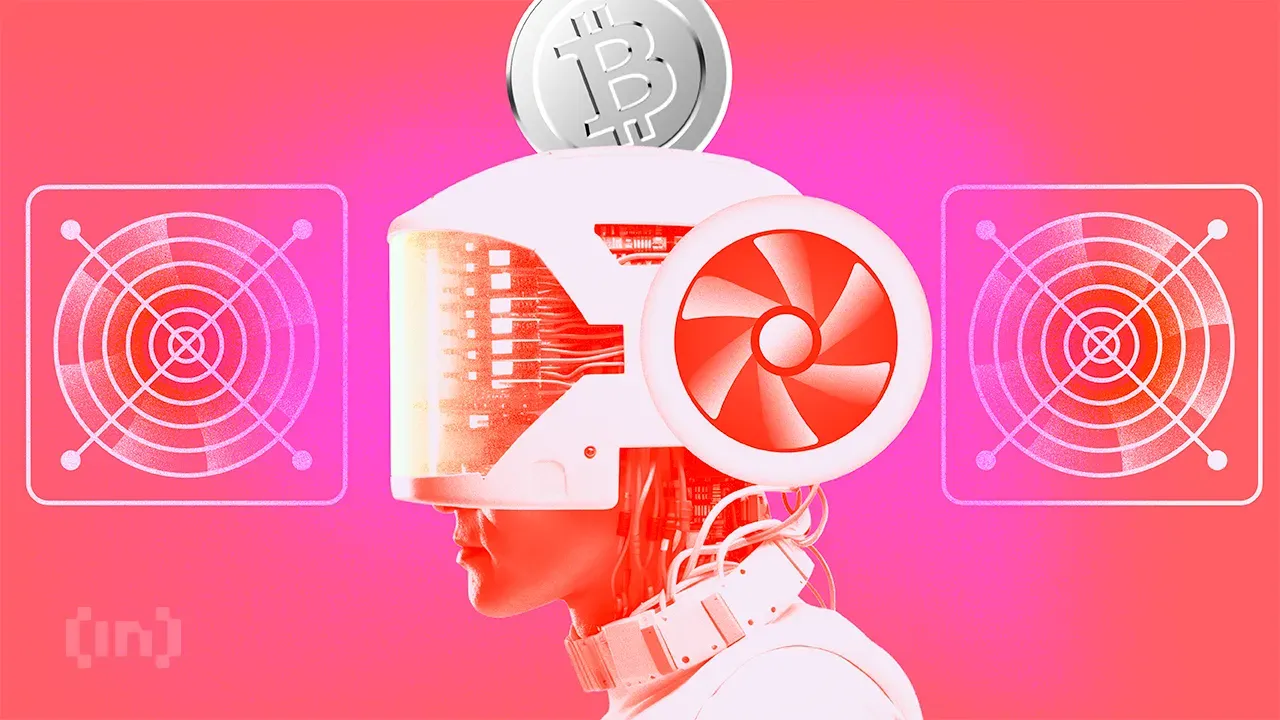
 Bitcoin16 hours ago
Bitcoin16 hours agoMarathon Digital to Sell $2 Billion in Stock to Buy Bitcoin
-

 Bitcoin11 hours ago
Bitcoin11 hours agoStrategy Adds 22,048 BTC for Nearly $2 Billion
-

 Market16 hours ago
Market16 hours agoStrategic Move for Trump Family in Crypto
-

 Market10 hours ago
Market10 hours agoBNB Breaks Below $605 As Bullish Momentum Fades – What’s Next?


